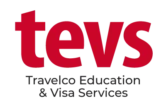If you are reading this guide, you are someone who has decided to study in Canada, right? Well, that is an awesome choice!
Canada is one of the most popular places for international students.
The reason for that is Canada is known for its world-class education and welcoming culture.
But before you pack your bags and book that flight, there’s something important you need to tackle: the financial requirements for your Canadian study visa.
Whether you’re applying through the Student Direct Stream (SDS) or the Regular Study Permit process, proving that you have enough money is non-negotiable. And honestly, it makes sense.
This is because Canada wants to make sure that you can support yourself while studying without any financial stress.
Therefore, this post will guide you through everything that you need to know about the bank balance requirements for your Canadian study visa in the most simplest way.
Table of Contents
ToggleUnderstanding the Financial Requirements
Let’s talk about why proof of financial stability is such a big deal.
Well, when you apply for a Canadian study visa, you’re essentially telling the government, “Hey, I’m coming here to study, and I’ve got my finances sorted.”
This is because they want to make sure that you won’t run into money issues when continuing your program.
Speaking of which, there are two main pathways for applying for a Canadian study visa: the SDS program and the Regular Study Permit process.
Whereas both require you to show that you can cover your tuition fees plus living expenses and other costs like health insurance and books.
However, the difference lies in how you demonstrate this financial stability.
How Much Bank Balance is Required?
Alright, let’s get down to the numbers. Here’s what you’ll need to consider:
Tuition Fees
Tuition fees can change depending on the institution and program that you choose.
On average, international students should pay around CAD 15,000 to CAD 30,000 per year.
On the other hand, if you’re planning to study engineering or medicine, you expect something higher than the average amount because those programs tend to cost more.
Living Expenses
Canada has set specific amounts for living expenses.
This means that if you’re studying outside Quebec, you’ll need to show CAD 10,000 per year.
However, if you’re in Quebec, it’s slightly higher at CAD 11,000 per year.
Note: This amount is meant to cover things like accommodation, food, transportation, and other day-to-day costs.
Additional Costs
Now, don’t forget about health insurance, books, and other expenses.
These can also change your budget.
For example, health insurance might cost you around CAD 600 to CAD 800 per year, depending on the province.
Plus, books and supplies could be another amount of CAD 1,000 per year.
Overall, to sum it all up, if you’re applying for a one-year program, you’ll likely need a total bank balance of at least CAD 25,000 to CAD 35,000.
Note: For longer programs, just multiply accordingly.
Types of Acceptable Financial Documents
Here’s what you can use to prove your financial stability:
- Bank Statements: These can show your money rotation balances over the last four months.
Tip: Avoid large or unexplained deposits, as they can raise red flags.
- Guaranteed Investment Certificate (GIC): This is mandatory for SDS applicants. Whereas you can purchase a GIC from Canadian banks like Scotiabank or RBC. It’s basically like depositing CAD 10,000 into a special account.
- Scholarships or Sponsorship Letters: If you’ve received scholarships or financial support from a sponsor, include those details as well as these will benefit you in unbelievable ways.
Suggested Read:
Tips to Meet the Bank Balance Requirement
Meeting the financial requirements doesn’t have to be stressful. Here are a few tips to help you out:
- Start saving early. This is because the earlier you begin, the easier it’ll be to maintain a stable account balance.
- Open a GIC if you’re applying through the SDS program. It’s a simple way to meet the living expenses requirements.
- Look for scholarships, grants, or sponsorships. Remember that every little bit helps!
- Avoid making large or unexplained deposits right before submitting your application. Kindly note that consistency is key in this case.
Conclusion
Meeting the bank balance requirement for your Canadian study visa might seem quite challenging at first, but with a proper plan, it is something possible.
Anyway, remember that Canada isn’t trying to make things difficult—they just want to ensure that you’re set up for success.
So, take the time to understand the financial requirements, gather the right documents, and seek professional guidance if needed.
And hey, once you’re there, don’t forget to enjoy the journey while carrying on your studies; this is because, after all, that’s your main goal.
Contact TEVS a Canada student visa consultants in Sri Lanka for more details.







